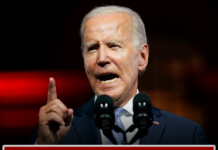Minnesota may soon pass a discriminatory law called “Increase Teachers of Color Act” that will dedicate millions of dollars to programs that only racial minorities can benefit from. The goal, according to legislators in the nation’s 12th-largest state, is to improve diversity in schools by increasing the number of teachers of color throughout Minnesota with taxpayer-funded scholarships and opportunities. Under the measure, $10 million will be dedicated to the minority initiative, which will establish a scholarship program to support undergraduate and graduate students preparing to become teachers if they belong to “racial or ethnic groups underrepresented in the state’s teacher workforce,” according to language in the proposed bill. Applicants must “affirm to the teacher preparation program or the Office of Higher Education that the applicant is a person of color or American Indian.”
The state lawmaker who sponsored the law, Mary Frances Clardy, says it will provide $5 million to mentor and retain teachers of color and around 500 scholarships annually of up to $10,000, which she calls an “investment in aspiring BIPOC teachers.” The acronym stands for black, indigenous, and other people of color and has been adopted by leftist officials nationwide as well as the federal government under the Biden administration. “The two main purposes for this bill is closing the opportunity gaps, as far as recruiting and preparing teachers, and employing them and retaining them in the system,” said Clardy, a Democrat who represents the southern Twin Cities Metro area in the Minnesota House of Representatives. An English teacher, Laketa Buice, who spoke in support of Clardy’s law before a Minnesota House Education Finance Committee testified that many of her students at the St. Paul City School that employs her have told her she is their first black teacher. “That made my heart warm, but also a bit saddened because children deserve the right to see a representation of themselves in the teachers that educate them,” Buice said.
At the hearing research was presented from the Minnesota Association of Colleges for Teacher Education to demonstrate how important it is for students be taught by teachers with the same racial background. In Minnesota, about 6% of the teacher workforce identifies as a person of color or indigenous, while about 37% of students identify as students of color or indigenous. “The need for this support arises out of the urgent need to create a teacher workforce that reflects the students in our schools,” according to the coalition, which added that research also backs providing financial support to people of color in teacher preparation programs as a strategy to increase representation in the education workforce. “This bill represents necessary legislation to strengthen existing programs and to create new efforts needed to attract, prepare, license and retain an increased number of teachers of color and American Indian teachers in Minnesota,” the association proclaimed at the hearing.
A University of Minnesota education professor advocating for the new law to increase teachers of color in the state claims in a local news report that minorities leave the field prematurely compared to their white counterparts due to “lack of diversity and racial battle fatigue.” The professor, Jehanne Beaton-Zirps, runs a program called DirecTrack to Teaching that exposes undergraduates at the public university to the culture of teaching and schools with the goal of preparing them for teaching license programs. According to Beaton-Zirps many “really, really talented teachers of color” have been through her program at the University of Minnesota but leave after teaching for two years. Her previously mentioned “racial battle fatigue” is presumably what pushed the talented teachers of color out of the profession prematurely, though no further details were offered to support the theory.
Some states have implemented measures or created policies to diversify the teacher workforce as the student population shifts, though they have not necessarily allocated millions of dollars for exclusionary minority-only scholarships like Minnesota. Connecticut passed a law last year that requires all boards of education throughout the state to implement plans for recruiting, hiring and retaining teachers of color. A few years ago, Colorado launched a teacher recruitment program for low-income and traditionally underserved high school students. Other states have a pipeline with Minority-serving institutions (MSIs), which produce a significant share of the nation’s teachers of color.

















